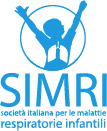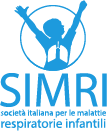Autori: Beatrice Andrenacci1, Gaia Di Bella2
Affiliazioni:
1Fondazione IRCCS Ca’ Granda Ospedale Maggiore Policlinico di Milano, Milano, Italia
2Dipartimento di Pediatria, Ospedale “F. Del Ponte”, Università dell’Insubria, Varese, Italia
Pediatric Sleep Study-related breathing disorders (SRBD) comprise a group of conditions characterized by abnormalities in the respiratory pattern during sleep, which may or may not be accompanied by desaturation and/or arousals. The prevalence of SRBD in pediatric populations ranges from 2% to 5%, with even higher rates in former premature infants, syndromic subjects, or those with neurodevelopmental alterations¹. If not recognized early and appropriately treated, SRBD can negatively affect a child’s neurocognitive development and psychophysical well-being, potentially impacting behavior, academic performance, quality of life, and increasing the risk of cardiovascular diseases². Thus, early diagnosis of these disorders is crucial to reduce both short- and long-term morbidity.
Current Diagnostics of SRBD in Pediatrics Sleep Study: Methods and Limitations
At present, polysomnography (PSG) is considered the gold standard for diagnosing obstructive sleep apnea syndrome (OSAS) in the pediatric age group. This multichannel test enables the evaluation of numerous physiological parameters such as brain activity (EEG), muscle activity (EMG), airflow, respiratory movements, and overnight oxygen saturation (SpO₂), thereby allowing precise identification and quantification of respiratory events. However, PSG is an expensive method that requires specialized resources and personnel, must be conducted in a controlled clinical environment, and is often poorly tolerated by children³.
Given these technical challenges, less invasive and more accessible alternatives—such as home polygraphy and overnight pulse oximetry—offer a good substitute for PSG while maintaining acceptable diagnostic capability. In particular, home polygraphy can detect essential parameters including airflow, thoracic and abdominal movements,
overnight SpO₂, and heart rate (HR), although it does not provide in-depth information regarding sleep staging. Conversely, overnight pulse oximetry, which documents nocturnal SpO₂ and HR values, is especially useful as a screening tool in otherwise healthy children with suspected adenotonsillar hypertrophy. Unlike PSG, however, pulse oximetry does not allow for discrimination between the obstructive or central nature of desaturating events, and may sometimes be inconclusive in cases of non-desaturating OSAS².
Future Diagnostics of SRBD in Pediatrics Sleep Study: Innovations and Prospects
The American Academy of Sleep Medicine (AASM) has recently established a dedicated task force to study the role of artificial intelligence (AI) in the diagnosis and monitoring of SRBD. The integration of new wireless technologies—which combine wearable devices specifically designed for pediatric patients with automated AI algorithms—offers enormous potential in the field of SRBD. This approach promises good diagnostic accuracy, improved tolerability for young patients, and significant reductions in both costs and reporting times. Moreover, the less invasive nature and
faster analysis provided by these devices could yield data more representative of a child’s habitual sleep, overcoming the "night-to-night" variability that can compromise conventional single-night sleep studies⁴. Currently, the most promising technologies include:
- Transcutaneous mechano-acoustic sensors;
- Devices for evaluating pulse transit time (PTT);
- Wearable devices employing acoustic diagnostic techniques;
- Devices for the detection of mandibular movements; and devices based on peripheral arterial tonometry (PAT);
- Transcutaneous mechano-acoustic sensors are wireless devices positioned in the suprasternal region;
- Using tri-axial accelerometry, they record mechano-acoustic signals originating from cardiovascular and respiratory activities.
When integrated with machine learning technologies, they enable non-invasive, automated evaluation of heart rate
(HR) and respiratory rate (RR) in relation to body movement⁵.
PTT devices record the time interval between the R-wave on the ECG and the detection of the peripheral pulse wave. Clinical studies on adults with SRBD have documented the high sensitivity and specificity of this method, which appears particularly more sensitive than EEG in detecting arousals associated with obstructive events⁶. Other wearable devices, positioned at the cervical level, capture acoustic data from the cardiovascular and respiratory systems. These data are processed by an algorithm that differentiates between obstructive and central apneas and hypopneas. Studies conducted on adults with SRBD have demonstrated high diagnostic accuracy in terms of both sensitivity and specificity, with lower costs compared to traditional PSG⁷.
Additional wireless wearable sensors placed on the chin detect mandibular movements as a surrogate marker for respiratory effort, generating a respiratory disturbance index (RDI). Such sensors can provide valuable diagnostic support by identifying micro-arousals that might not be visible on EEG, and they generate automated reports that save significant time compared to manual analysis of polysomnographic data⁸. Finally, devices placed simultaneously on the chest, wrist, and index finger evaluate peripheral vasoconstriction and the HR increase that occur concurrently with an apnea/hypopnea event by detecting variations in the signal from peripheral arterial tonometry (PAT) at the index finger. Preliminary studies on adults with SRBD have shown an excellent correlation between these data and those obtained from PSG.
In pediatrics, a study conducted on adolescents appears to confirm the validity of these devices for detecting respiratory events, demonstrating good correlations between PAT and both the apnea–hypopnea index (AHI) and average SpO₂. However, the small size of these devices contraindicates their use before the age of 5–6 years⁹.
Further studies are necessary to verify the validity of these methods in pediatrics.
The Future of SRBD Diagnostics in Pediatrics: Towards Phenotyping?
Thanks to machine learning algorithms, it is now possible to analyze enormous datasets derived from overnight monitoring, enabling the identification of patterns that combine specific physiological data with particular genetic and/or demographic characteristics.
In this context, the integrated analysis of multidimensional data could allow for the definition of SRBD endotypes/phenotypes (“sleep-omics”)⁷, paving the way for personalized therapeutic approaches tailored to the specific needs of each patient.
Conclusions
Over the past 25 years, technological advancements have significantly improved the diagnosis of SRBD in pediatrics. Despite the established role of PSG as the diagnostic standard, its numerous limitations have paved the way for easier-to-perform alternative methods such as home polygraphy and overnight pulse oximetry. The combination of new wearable devices, AI technologies, and large multicentric datasets offers new perspectives for increasingly precise, rapid, and personalized diagnosis of SRBD, resulting in reduced healthcare costs, improved access to care, and enhanced health and quality of life for young patients with SRBD.
No metadata found.



